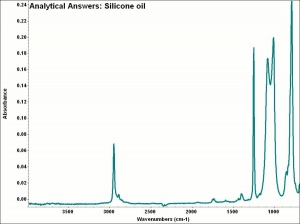Difference between revisions of "Silicone cure systems"
m (MDerrick moved page Silicone to Silicone cure systems without leaving a redirect) |
|||
| Line 1: | Line 1: | ||
== Description == | == Description == | ||
| − | Any of a large group of semi-inorganic polymers based on siloxanes. Silicones were first discovered by F.S. Kipping in England in 1904, but were not commercially produced as polymers until 1943 by Dow Corning and 1946 by General Electric. They were called silicones because their empirical formula (R2SiO) is similar to that for ketones (R2CO) (Lewis, 1993). | + | Any of a large group of semi-inorganic polymers based on siloxanes. Silicones were first discovered by F.S. Kipping in England in 1904, but were not commercially produced as polymers until 1943 by Dow Corning and 1946 by General Electric. They were called silicones because their empirical formula (R2SiO) is similar to that for ketones (R2CO) (Lewis, 1993). Once cured [[silicone resin|silicone resins]] can be liquids, gels, and elastomers as well as solid thermoplastic or thermosetting resins. The curing process, however, can be done by several methods, each resulting in different cure times, volatiles emission and product characteristics. |
| + | Chemically, a silicone elastomer can be cured into a solid via an 'addition' reaction or a 'condensation' reaction. An addition reaction may use catalysts (platinum or tin) but the condensation process also requires oxygen and moisture. The addition of UV light or heat will decrease the cure time. Silicone polymers cured in open air at room temperature can be called RTV (Room Temperature Vulcanization). | ||
See also | See also | ||
* [[Oxime silicone]] (neutral cure silicone) | * [[Oxime silicone]] (neutral cure silicone) | ||
Revision as of 12:26, 13 September 2022
Description
Any of a large group of semi-inorganic polymers based on siloxanes. Silicones were first discovered by F.S. Kipping in England in 1904, but were not commercially produced as polymers until 1943 by Dow Corning and 1946 by General Electric. They were called silicones because their empirical formula (R2SiO) is similar to that for ketones (R2CO) (Lewis, 1993). Once cured silicone resins can be liquids, gels, and elastomers as well as solid thermoplastic or thermosetting resins. The curing process, however, can be done by several methods, each resulting in different cure times, volatiles emission and product characteristics.
Chemically, a silicone elastomer can be cured into a solid via an 'addition' reaction or a 'condensation' reaction. An addition reaction may use catalysts (platinum or tin) but the condensation process also requires oxygen and moisture. The addition of UV light or heat will decrease the cure time. Silicone polymers cured in open air at room temperature can be called RTV (Room Temperature Vulcanization). See also
- Oxime silicone (neutral cure silicone)
- Alkoxysilane (neutral cure silicone)
- Acetoxy silicone (acid cure silicone)
- Amine silicone (base cure silicone)
Synonyms and Related Terms
polysiloxane; silicona (Esp.); silicone (Fr.); silicone (It.); silicone (Port.); organosiloxane; silicones
Examples: Silastic [Dow];
Risks
- Silicone Solutions: SDS for clear gel
Resources and Citations
- Richard S. Lewis, Hawley's Condensed Chemical Dictionary, Van Nostrand Reinhold, New York, 10th ed., 1993
- Random House, Webster's Encyclopedic Unabridged Dictionary of the English Language, Grammercy Book, New York, 1997
- The American Heritage Dictionary or Encarta, via Microsoft Bookshelf 98, Microsoft Corp., 1998
- M.Kaufman, The First Century of Plastics, The Plastics and Rubber Institute, London, 1963
- History of Plastics: www.nswpmith.com.au/historyofplastics.html - discovered by F.S. Kipping in 1904
- Art and Architecture Thesaurus Online, http://www.getty.edu/research/tools/vocabulary/aat/, J. Paul Getty Trust, Los Angeles, 2000
